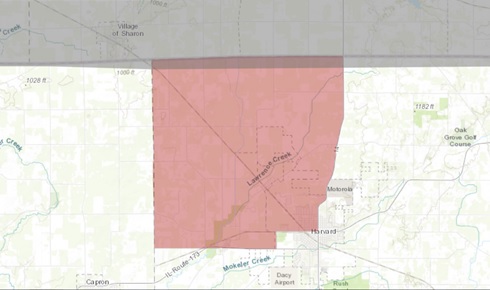State Representative Steve Reick (R-Woodstock) is joining Governor Bruce Rauner in announcing that Harvard has been chosen as one of 327 “Opportunity Zones” approved by the U.S. Treasury. The Opportunity Zones program encourages long-term investment and job creation in low-income areas of the state, by allowing investors to re-invest unrealized capital gains in designated census tracts.
According to Reick, the Harvard parcel is bordered on the north by the Illinois-Wisconsin state line, on the west by the McHenry-Boone County line, on the east by IL Route 14, and on the south by IL Route 173. “This parcel in Harvard is ripe for job growth and economic opportunity,” said Reick. “I am pleased to see that Governor Rauner shares that opinion and included this tract of land in his final recommendation to the U.S. Treasury.”
Established by the Federal Tax Cuts and Jobs Act of 2017, Opportunity Zones present an opportunity for private, tax-free investment in low-income areas with economic need, benefitting residents living in the zones and private investors. Through the selection process, Governor Rauner was eligible to nominate 25% (327) of the state’s 1,305 qualifying low-income census tracts as Opportunity Zones.
“Illinois is the epicenter of commerce in the Midwest and, as such, our people and our businesses are uniquely positioned to leverage the state’s assets into enterprise and job creation,” Rauner said.
To determine the most effective tracts for nomination, a three-phase approach was implemented to identify need and potential, adequately represent the entire state, and account for public input. Phase one involved need-based indexing depending on factors like poverty rates, specifically those among children, unemployment rates, crime rates and population.
Phase two and three were used to further identify the 327 tracts Illinois could nominate under the federal program guidelines. To ensure a statewide benefit, each county with qualifying tracts received at least one zone and towns and cities across the state were limited on the number of zones included.
